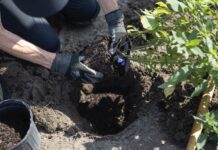The conversation about the proposed blueprint has reached a fever pitch in Key West.
The Keys are passionate about their waters — and rightly so. The shallow waters provide restful weekends and fresh fish dinners — and for many, they provide the setting for businesses catering to visitors who want to boat, snorkel, dive and fish. It’s with this in mind that many local residents view the new Florida Keys National Marine Sanctuary (FKNMS) Restoration Blueprint with mixed emotions. As the Weekly has previously reported, the blueprint outlines three paths (and one “status quo” option) that will increase preservation efforts, with the aim of ensuring the waters are safe and healthy for generations to come. The three potential restoration plans are progressively restrictive in terms of marine zone usage.
As with any preservation effort, the blueprint requires a willingness to adapt habits — something that met some resistance in the Sept. 23 community meeting to discuss the proposal.
All proposal options are now in a period of information and public comment as FKNMS staff and members present the options in open forums and accept and consider public comment. At the Sept. 23 meeting, representatives from NOAA presented the first informational session to a standing-room-only crowd at Key West High School. While the speakers heard scattered applause and received thoughtful submitted public comments and questions, the overall tone of the meeting quickly deteriorated. By the end of the third slide, boos and shouts from raucous audience members disrupted the stream of information being presented. FKNMS Superintendent Sarah Fangman and policy advisor Beth Dieveney retained their composure amidst shouts of “Where do you live? Go back to Ohio,” maintaining their composure.
As the meeting progressed to the public comment segment, Fangman stood center stage, speaking directly to detractors. “I hear you loud and clear. You don’t like some of this.” Fangman reiterated that the emotional response is the impetus for such meetings, citing continued public concern over the state of the reef and surrounding waters and ongoing calls for conservation. “We want to know if and how the community wants to do this.” A large point of contention is that popular boating destinations — like Snipes and Marvin Keys — would now be restricted from public access.
The proposed changes would address several key issues that affect the quality of life for small commercial outfits, as well as leisure-seekers. All proposals carry a bid to update the discharge exemption to disallow graywater from cruise ships and to limit the number of large commercial tourism outfits visiting the reefs and backcountry.
With those restrictions, though, come restrictions to personal and small commercial craft as well. The proposed plan includes new “no entry” points from critically threatened areas, as well as idle speed/no wake zones and stipulations on trolling in certain areas. One submitted question that was read asked, “How do you define trolling at Western Dry Rocks?” A FKNMS representative responded, “We are asking for your input. We want to know what it means for you, what works for you. Is it three knots, five knots?” The representatives noted that the information coming out of public comment is directly affecting the structure of the plan. Responding to a question about individuals being allowed to qualify for Blue Star status, Fangman replied, “That’s a good question. We never considered things like this but a lot of good ideas are coming out of public comment and conversations.” She also brought up the idea of filling the buoys and limiting access once all mooring balls are full.
For those concerned about impediments to preservation efforts, or limitations to their personal enjoyment of the waters, the public comment period is live through the end of January. By advocating through the proper channels, the voices of conservationists and captains, scientists and devout Sunday Funday worshippers can all be heard.
The full FKNMS Restoration Blueprint can be found at: floridakeys.noaa.gov/blueprint
Public comment is open through end of January. Community members may submit comments and questions at public meetings or online comment at regulations.gov (docket #NOAA-NOS-2019-0094). Members of the public may also provide oral comments on the proposals during the Sanctuary Advisory Council meetings in October and December in the Keys. These meetings will also be streamed live on the Sanctuary Advisory Council’s YouTube channel.
Upcoming public meetings (starting at 6 p.m. except where noted):
Monday, Sept. 30
Marathon
Marathon Middle High School
350 Sombrero Beach Road
Monday, Oct. 7
Tavernier
Coral Shores High School
89901 Old Highway
Tuesday, Oct. 15, 1 to 9 p.m.
Key West
Marriott Beachside Hotel
3841 N Roosevelt Blvd
Monday, Oct. 28
Coral Gables
University of Miami Newman Alumni Center
6200 San Amaro Drive
Monday, Nov. 4
Fort Myers
Holiday Inn Airport at Town Center
9931 Interstate Commerce Drive
Tuesday, Dec. 10, 1 to 9 p.m.
Upper Keys
Location to be announced
Why do we need a new blueprint for conservation?
The FKNMS has been a vital part of the Keys since 1990, when Congress designated 3,800 square miles of shallow water between the Gulf of Mexico and the Atlantic Ocean as protected space to be managed and monitored. For nearly 30 years, NOAA has kept watchful eyes over the sanctuary, which surrounds more than 1,700 islands. Sadly, recent data paints a bleak picture. The 2011 Condition Report for FKNMS found that all areas rated either fair or fair/poor. When measured against the 15 years preceding that study, scientists saw declines in all live coral and species diversity metrics. Stony coral cover had dropped from an already low 12.7% to 6.6%. Elkhorn and staghorn coral had been decimated to 5-10% and 2%, respectively, putting both in danger of extinction. Events in recent years have exacerbated the damage. Mass bleaching events, a rampant coral disease and Hurricane Irma have all taken their toll on the delicate ecosystem.
























